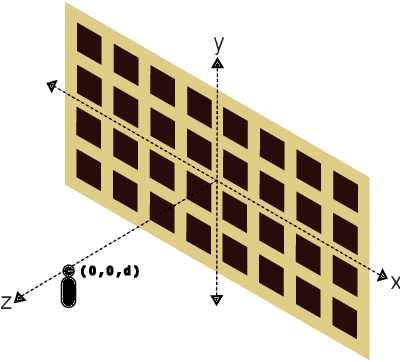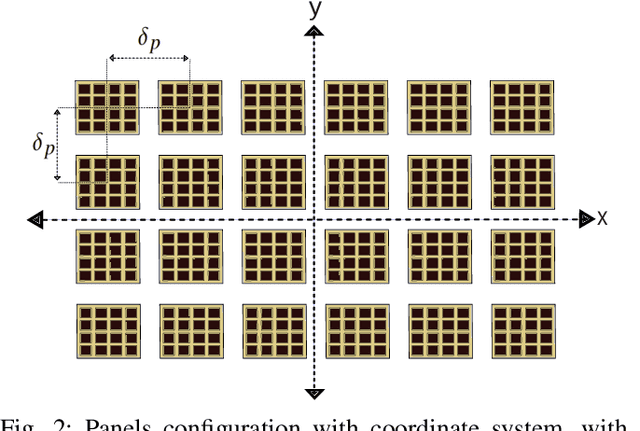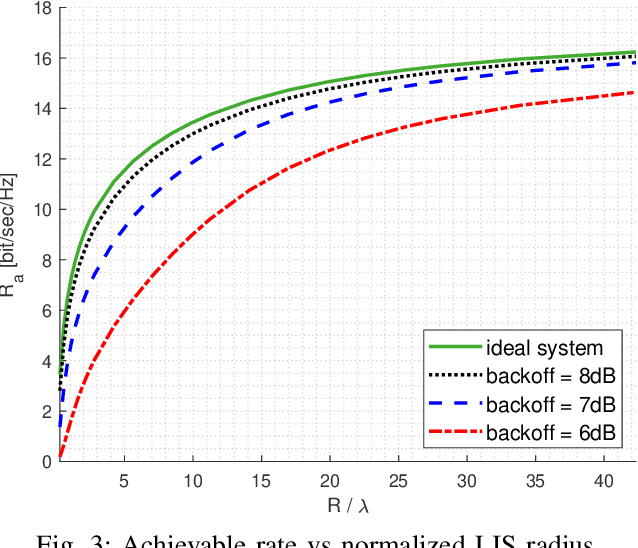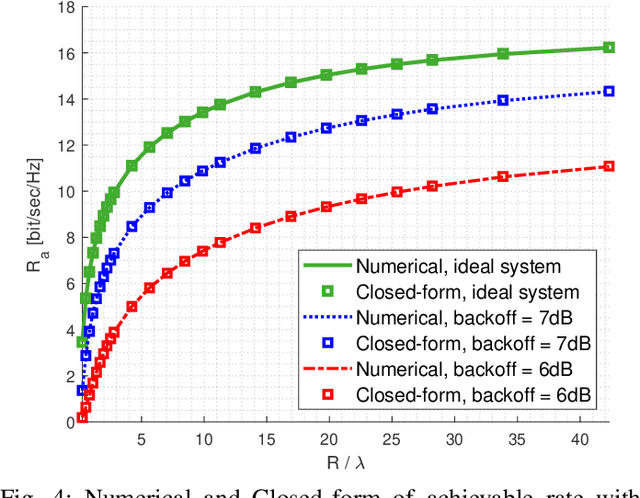Ashkan Sheikhi
Over-the-Air DPD and Reciprocity Calibration in Massive MIMO and Beyond
Nov 07, 2024Abstract:In this paper we study an over-the-air (OTA) approach for digital pre-distortion (DPD) and reciprocity calibration in massive multiple-input-multiple-output systems. In particular, we consider a memory-less non-linearity model for the base station (BS) transmitters and propose a methodology to linearize the transmitters and perform the calibration by using mutual coupling OTA measurements between BS antennas. We show that by only using the OTA-based data, we can linearize the transmitters and design the calibration to compensate for both the non-linearity and non-reciprocity of BS transceivers effectively. This allows to alleviate the requirement to have dedicated hardware modules for transceiver characterization. Moreover, exploiting the results of the DPD linearization step, our calibration method may be formulated in terms of closed-form transformations, achieving a significant complexity reduction over state-of-the-art methods, which usually rely on costly iterative computations. Simulation results showcase the potential of our approach in terms of the calibration matrix estimation error and downlink data-rates when applying zero-forcing precoding after using our OTA-based DPD and calibration method.
Large Intelligent Surfaces with Low-End Receivers: From Scaling to Antenna and Panel Selection
Nov 07, 2024



Abstract:We analyze the performance of large intelligent surface (LIS) with hardware distortion at its RX-chains. In particular, we consider the memory-less polynomial model for non-ideal hardware and derive analytical expressions for the signal to noise plus distortion ratio after applying maximum ratio combining (MRC) at the LIS. We also study the effect of back-off and automatic gain control on the RX-chains. The derived expressions enable us to evaluate the scalability of LIS when hardware impairments are present. We also study the cost of assuming ideal hardware by analyzing the minimum scaling required to achieve the same performance with a non-ideal hardware. Then, we exploit the analytical expressions to propose optimized antenna selection schemes for LIS and we show that such schemes can improve the performance significantly. In particular, the antenna selection schemes allow the LIS to have lower number of non-ideal RX-chains for signal reception while maintaining a good performance. We also consider a more practical case where the LIS is deployed as a grid of multi-antenna panels, and we propose panel selection schemes to optimize the complexity-performance trade-offs and improve the system overall efficiency.
 Add to Chrome
Add to Chrome Add to Firefox
Add to Firefox Add to Edge
Add to Edge